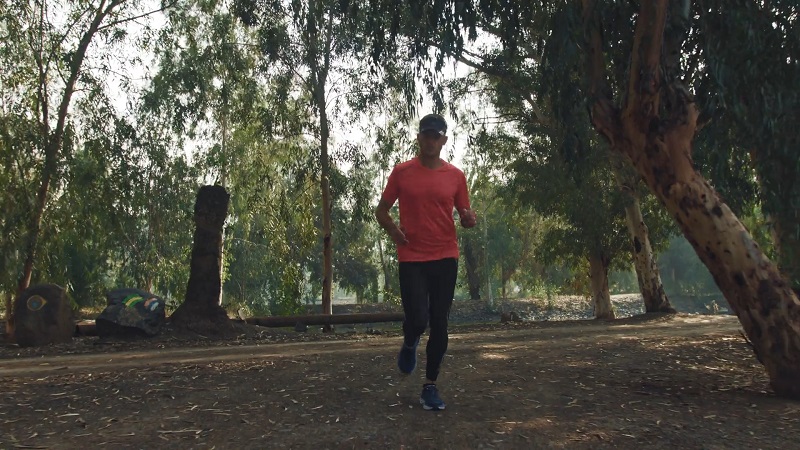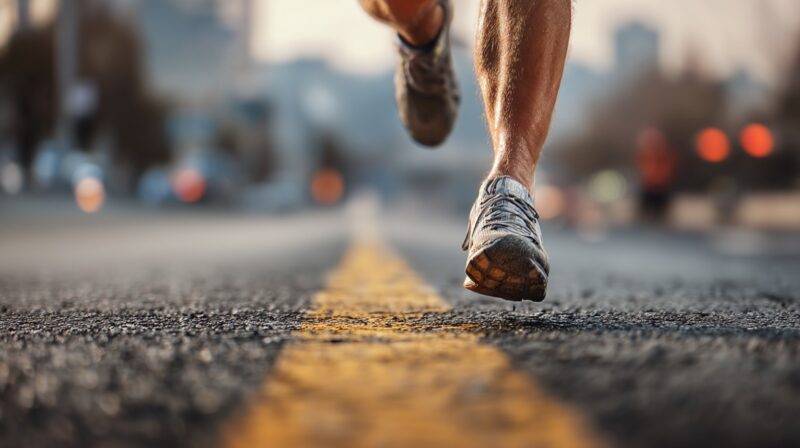Fitness routines often raise one pressing question: should you run on an empty stomach? Many runners choose to skip breakfast and head straight into their workout. Others prefer eating before any form of cardio. The decision carries real effects on fat usage, energy levels, and muscle support. Some believe fasted running helps with fat loss. Others worry it may lower performance or lead to muscle breakdown.
Running without food can trigger different outcomes based on your goals, body type, and the intensity of the session. Fat becomes a primary energy source when glycogen is low. That can support weight reduction, but also introduce fatigue and strain. Some report clear focus and comfort without pre-run meals. Others feel dizzy or lightheaded without fuel.
This article explains every side. You will see what fasted running means, why some support it, and what risks to consider. The guide compares benefits and drawbacks, covers the best times to use fasted runs, and outlines who should avoid them. Each section focuses on facts, so you can decide what fits your goals and routine.
Table of Contents
ToggleKey Insights
- Running on an empty stomach can support fat use during light, steady runs.
- It may help early risers who want to train without dealing with food or digestion.
- Skipping fuel before intense or long runs often leads to fatigue, muscle loss, or low energy.
- Eating before harder sessions remains important for strength, endurance, and overall performance.
What Does It Mean to Run on an Empty Stomach?

Fasted running involves aerobic activity without any calories consumed beforehand. It typically includes low to moderate-intensity workouts. Common examples include morning jogs, brisk walks, or light treadmill runs before breakfast. The idea centers on encouraging the body to draw energy from stored fat rather than recent meals.
Athletes who use this method believe it promotes fat oxidation and supports lean body goals. The practice is popular among intermittent fasters and early-morning runners. It allows training to begin right after waking up without waiting for digestion. [1]
Why People Try It
Several motivations lead people to run without food. Some prefer the convenience of skipping breakfast and exercising first thing. Others claim better focus, easier breathing, and less bloating during fasted cardio. Many associate it with weight loss, believing the body turns to fat stores more quickly when glycogen is low.
Others follow training protocols that alternate fed and fasted sessions for metabolic flexibility. Some aim to improve insulin sensitivity or support long-term blood sugar control. People also choose fasted runs to maintain consistency in their routines when mornings feel rushed.
Fasted running appeals to those looking for simplicity, discipline, or a sharper fat-burning edge. However, benefits depend on timing, intensity, and the individual’s health profile.
Benefits of Running on an Empty Stomach

Running without food in your system can create unique effects on how your body burns energy, reacts to hormones, and handles stress. Many people choose fasted running to improve discipline, simplify routines, or push their body toward deeper fat usage.
The benefits only apply under the right conditions. Each one listed below reflects actual biological outcomes supported by training experience and research.
According to Christine Luff in her article on Verywell Fit, occasional fasted runs may lead to improved performance during later workouts and races when fully fueled.
Increased Fat Use During Cardio
Running without eating forces the body to rely on energy stored in fat. Glycogen levels stay low after fasting overnight. When you begin cardio in that state, your body uses fat as a primary energy source instead of carbs. This shift makes fasted cardio popular among runners focused on fat loss. [2]
Fat use increases most during light to moderate sessions. Early morning jogs or 30-minute treadmill runs allow fat metabolism to work without sharp energy demands. The body adjusts by tapping fat stores more quickly than it would after a meal. This outcome supports weight reduction goals without lowering training consistency.
Improved Hormonal Response
Fasted running may increase insulin sensitivity. The body becomes more efficient at processing glucose later in the day. That means better blood sugar control and fewer energy crashes. This hormonal benefit helps people who want steady energy or improved metabolic balance over time. [3]
Low insulin levels during fasted exercise allow fat burning to increase. That works well with stable hydration, moderate intensity, and enough sleep the night before. The result is a sharper metabolic response, especially for people who train regularly in the morning. [4]
Fewer Stomach Problems
Running on an empty stomach eliminates bloating, reflux, or cramps caused by food. Some people struggle with digestion during cardio. A full stomach creates discomfort and interferes with breathing rhythm. Fasted cardio removes that problem completely.
Those with sensitive digestion often find early workouts easier without breakfast. The body feels lighter, and the run feels smoother. Even those without digestion issues sometimes prefer the freedom of movement without food in their system. Light sessions in a fasted state bring fewer interruptions.
Saves Time and Simplifies Routine
Running without food helps you move faster through your morning. No meal prep, no digestion delay, no wasted time. You get out of bed, hydrate, stretch, and go. This simplicity appeals to people with tight schedules or early work shifts.
Fasted runs encourage consistency. Removing the food step makes routines more direct. Runners who follow a fixed morning rhythm often say that skipping breakfast helps them stay focused and committed. Simpler starts mean fewer skipped sessions.
Risks and Downsides of Running on an Empty Stomach

Running without eating may help some people reach specific goals, but it can also lead to clear drawbacks. Energy levels drop faster, muscles may suffer, and certain people face real safety concerns.
Fasted cardio works best under certain conditions. It becomes risky when intensity rises, runs go too long, or personal health factors are ignored. The following sections explain exactly what can go wrong.
Early Fatigue and Weak Output
Your body runs on stored fuel, mostly glycogen, during intense movement. Skipping food means those stores stay low. When you push your pace or extend your session, energy drops fast. The result is slower speed, shorter duration, or total burnout before the workout ends.
This matters for athletes or anyone aiming to improve endurance. Training with low fuel limits how hard you can push. That blocks progress, stalls adaptation, and breaks rhythm. Fasted runs offer little value during sprint intervals, speed drills, or long-distance training.
As Dr. Sebastian Denscy explains in her article on iCliniq, running on an empty stomach may reduce brain glucose levels during faster-paced runs, making it harder to focus and increasing the risk of injury due to impaired attention and poor form.
Higher Risk of Muscle Breakdown
Without carbs in your system, your body may start pulling energy from protein instead. That includes muscle tissue. Over time, repeated fasted running without proper post-workout meals can reduce lean muscle. That weakens power, slows metabolism, and limits long-term progress.
This concern matters most for those building strength or protecting muscle mass during weight loss. Without enough fuel, muscle becomes a backup energy source. That process limits gains and increases soreness.
Blood Sugar Crashes and Dizziness
Running without food can trigger low blood sugar. This leads to dizziness, nausea, shaking, or lightheadedness. For some, especially beginners or people with unstable glucose levels, the danger feels immediate. Sharp fatigue or confusion may force you to stop the run completely.
Fasted cardio places extra stress on the nervous system. That pressure affects how the brain handles focus, motion, and effort. Symptoms like tunnel vision, sudden headaches, or mood shifts often signal a blood sugar crash during fasted movement.
Not Safe for Everyone
People with medical conditions or special dietary needs should not try fasted running without guidance. That includes individuals with diabetes, anemia, hormonal imbalances, or those recovering from injury. The stress of running without food creates instability that can slow recovery or trigger complications. [5]
Pregnant people, teenagers, or those with eating disorders should also avoid fasted cardio. Skipping fuel during exercise affects more than energy. It can damage hormone function, mental clarity, and long-term nutritional stability.
When Is It Best to Run on an Empty Stomach?

Fasted running works best in very specific cases. Not every runner benefits, and not every workout suits the method. Success depends on intensity, duration, time of day, and personal goals.
Runners who use fasted cardio properly usually target fat loss, maintain low-to-moderate pacing, and stay alert to their limits. The following sections explain exactly when fasted running fits into a safe and useful routine.
Low to Moderate Intensity Runs
Fasted cardio fits best with light runs, walks, or steady-state sessions. These workouts do not demand rapid energy. Instead, they give the body time to draw fuel from fat. Your heart rate stays steady, breathing stays controlled, and the strain on muscles stays low.
Short jogs around the neighborhood, 30-minute treadmill sessions, or early morning walks work well without food. The lower the intensity, the easier it is for your body to adapt. These conditions allow fat oxidation to happen without crashing your energy levels.
Early Morning Training Sessions
Fasted running suits early risers. Many people wake up without appetite. Eating before a 6 AM workout feels heavy, rushed, or even impossible. A fasted session allows them to move right after waking. No food means less prep, no digestion delay, and more consistency in morning habits.
Morning fasted runs also support habit-building. Runners who train at the same time every day often use this approach to anchor their routine. It creates a sense of rhythm that helps with discipline and long-term fitness progress.
Fat Loss as a Primary Goal
People focused on reducing fat often explore fasted running. Without recent food, insulin levels drop and fat becomes the main energy source. That can support body composition goals over time. Consistency and proper recovery still matter, but fasted cardio plays a role in some cutting routines.
However, it is a misconception that this will greatly improve the weight loss progress. Ashley Mateo from Runner’s World explains that although fasted running may slightly increase fat use during a workout, it does not lead to greater overall weight loss, since total calorie burn remains the same and performance may suffer without fuel.
When You Should Eat Before Running
Fasted running may suit some people and situations, but many workouts demand proper fuel. Intensity, duration, performance goals, and health conditions all affect how much energy your body needs before a session.
Skipping food in the wrong situation leads to slow progress, weak performance, or even serious health risks. Eating before a run becomes essential when the demands rise. Each scenario below shows where pre-run nutrition makes a clear difference.
Intense or Long-Distance Runs
Hard workouts burn through glycogen fast. That includes speed drills, hill sprints, tempo runs, and anything over 60 minutes. Without food, the body struggles to sustain power and focus. Endurance drops, muscle strain increases, and recovery takes longer.
Eating before long or intense sessions allows your body to perform at full capacity. You need fast energy to hit your pace, maintain power, and avoid fatigue. Glycogen levels stay stable when pre-run meals include carbs, which keeps effort consistent across the entire workout.
Building Muscle or Improving Speed
Runners who focus on performance gains or muscle growth must eat before cardio. Fasted sessions limit power output. That reduces the effectiveness of training focused on speed, strength, or interval work. Without food, your body lacks the fuel to push harder, recover faster, or maintain training volume.
A small pre-run meal with protein and carbs helps preserve muscle tissue and improves output. It also keeps energy steady across sets, especially during speed work or strength-based runs. Skipping food blocks progress when performance becomes the goal.
Tips for Safe and Effective Fasted Running
Fasted running can support specific goals, but only with the right plan. Skipping food before a workout changes how your body responds to stress, effort, and recovery. Without a clear approach, energy drops quickly and results stall. Proper hydration, smart timing, and balanced meals after the run make a major difference. Each tip below helps you stay safe and get the most from every fasted session.
Begin with Short and Easy Runs
Always start with low-intensity runs under 30 minutes. Avoid hills, intervals, or long-distance efforts during your first fasted sessions. Let your body adapt slowly to the change in fuel source. Pay close attention to how you feel during and after each run.
Mild discomfort at first may pass, but sharp fatigue, nausea, or shakiness signals a need to stop or eat before future sessions. Building tolerance step by step keeps you safe and helps the method work.
Hydration Comes First
Drink water before your run and keep some nearby during longer sessions. Fasting overnight leads to mild dehydration, especially without fluids in the morning. Even light cardio increases sweat and strain on your system.
You do not need sports drinks or sugar water for short fasted sessions, but clean water supports circulation, mental focus, and energy. Starting your day with hydration helps every part of the workout feel smoother.
Always Refuel After Your Run
Post-run meals matter more during fasted training. Your body ends the session in a depleted state. Muscles need nutrients right away to begin recovery, repair damage, and restore glycogen. Without fuel after cardio, soreness builds and results slow down.
Choose a balanced post-run meal with protein and complex carbohydrates. Examples include eggs and oats, Greek yogurt with berries, or a protein shake with a banana. Eat within 30 to 60 minutes of finishing the workout.
Final Thoughts
Running on an empty stomach offers clear benefits under the right conditions. It supports fat use, helps simplify your routine, and may improve metabolic response during low to moderate sessions. Early morning runners often find it practical and comfortable. When used for the right type of cardio, it can become a reliable tool in your weekly training plan.
That said, the method does not suit every situation. Hard workouts, long-distance efforts, or strength-focused routines require proper fuel. Skipping food in those cases leads to weak output, longer recovery, and risk of injury. People with medical needs or recovery demands should always prioritize safety and nourishment before training.
The key is to match your fuel plan to your goal. Use running on an empty stomach when fat reduction, habit consistency, or schedule simplicity matter most. Add fuel when power, speed, or distance become the focus. Always stay alert to signs of fatigue, dizziness, or poor recovery.
Smart training always respects the body’s needs. Listen to signals, adjust based on how you feel, and choose the method that fits both your lifestyle and your performance goals. Running on an empty stomach may have a place, but only when used with clear purpose and care.
References
- Department of Kinesiology, Samford University – Effects of Prior Fasting on Fat Oxidation during Resistance Exercise
- National Library of Medicine – Body composition changes associated with fasted versus non-fasted aerobic exercise
- Research Centre for Exercise and Health – Training in the fasted state improves glucose tolerance during fat-rich diet
- West-German Centre of Diabetes and Health – Weight Reduction by the Low-Insulin-Method—A Randomized Controlled Trial
- Journal of Sports Medicine – Exercise Training and Fasting: Current Insights
Related Posts:
- 25 Simple Running Motivation Tips To Get You Moving
- Top 400 Hilarious Gym Quotes to Keep You Motivated
- How Can You Start a Career as a Running Coach?
- How Far Is a Half Marathon? Everything You Need to Know
- Half Marathon Training Plan for Beginners - Simple…
- How Long Does It Take to Train for a Half Marathon?







